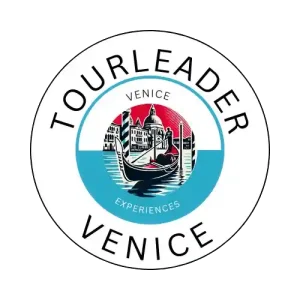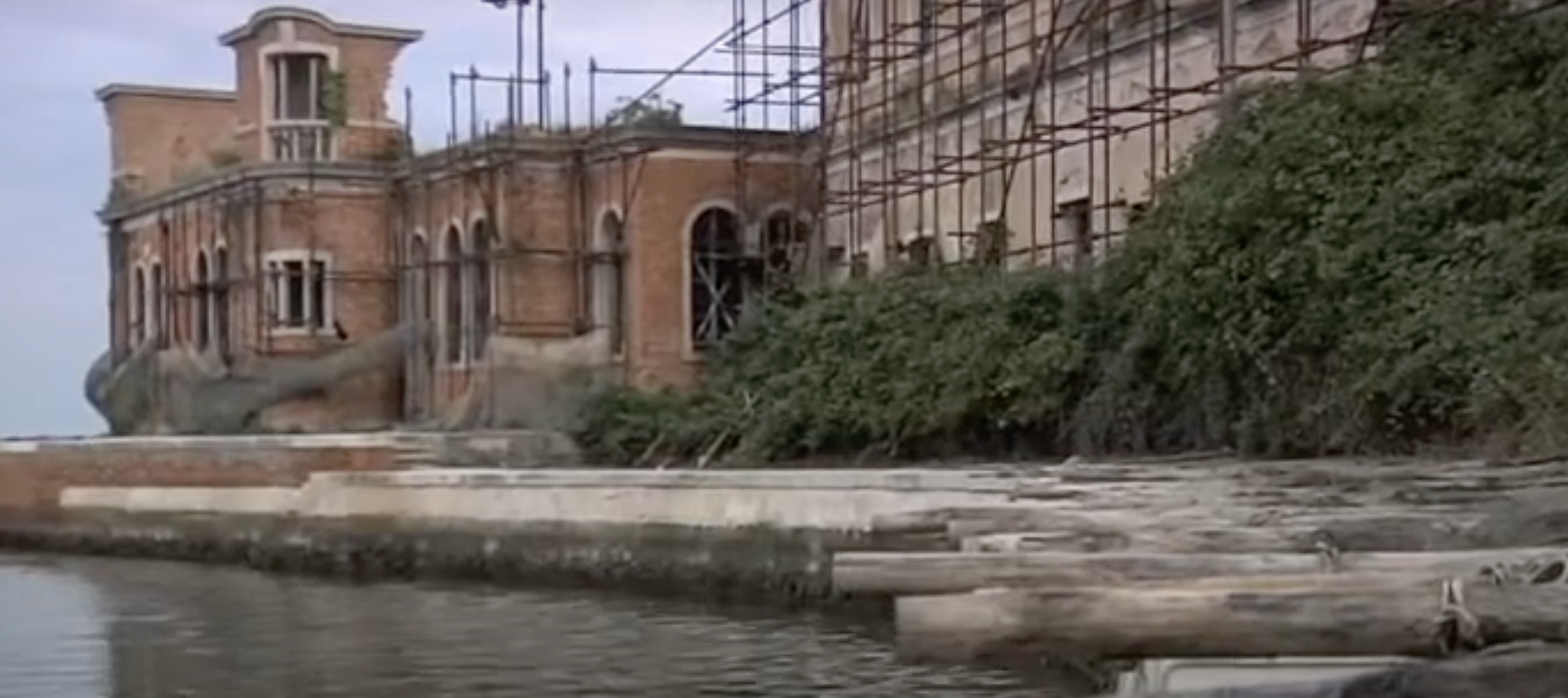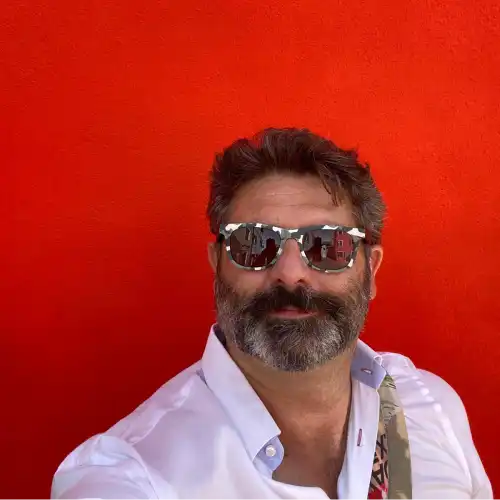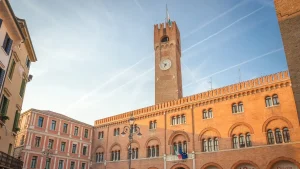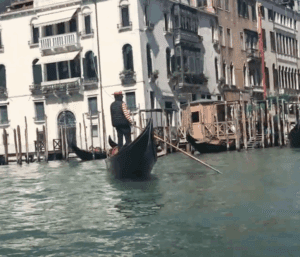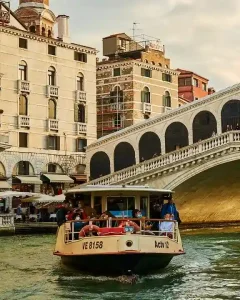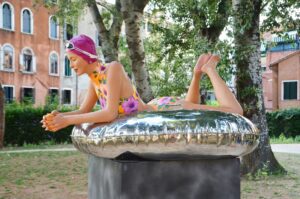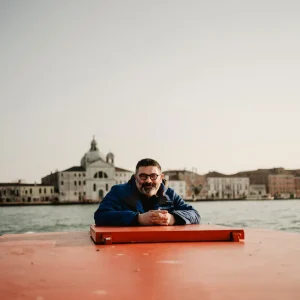Poveglia: Venice’s Haunted Island Reborn — From Ghost Hunters USA to a Local Sanctuary
Just beyond the glittering domes of St. Mark’s and the romantic hum of gondolas lies a very different kind of Venetian story — one wrapped in fog, legend, and whispers of the dead. A short boat ride south of the city, between Malamocco and the Lido, sits Poveglia — the small, uninhabited island once branded “the most haunted place in the world.”
It’s a name so chilling that for decades, even Venetian fishermen refused to sail too close. And when Ghost Hunters USA filmed an episode here, their cameras captured what they claimed were unexplainable voices echoing through the ruins — turning Poveglia into an international fascination for paranormal fans.
But in 2025, the island’s story took an extraordinary turn. After centuries of fear and abandonment, Venetians are reclaiming Poveglia — not as a horror attraction, but as a symbol of hope, memory, and quiet resistance.
🏰 A Timeline of Shadows: Poveglia Through the Ages
Early Settlement — From Refuge to Ruin
Poveglia first appeared in Venetian records in 421 AD, when refugees from the mainland fled barbarian invasions and found safety on its shores. For centuries, it was a modest but thriving community — farmers, fishermen, families — with its own small government and church. But in 1379, during Venice’s war with Genoa, its residents were ordered to evacuate. They never returned.
The Plague Years
Then came the Black Death. In the late 18th century, Venice repurposed Poveglia as a lazaretto — a quarantine station for ships suspected of carrying the plague. Anyone showing symptoms was ferried there and left to die. Bodies were piled in mass graves and burned in open pits. Historians estimate that more than 100,000 victims may rest beneath its soil.
The Asylum Era
In 1922, the island’s decaying buildings became a psychiatric hospital. Local stories tell of a doctor who performed cruel experiments on patients — until, driven mad by guilt, he leapt from the bell tower. Whether that’s fact or folklore, no one knows for sure. The hospital closed in 1968, and the buildings were left to crumble — their empty corridors soon claimed by ivy, seagulls, and silence.
👻 The Myths That Made Poveglia Famous
Few places on Earth have such a reputation for darkness. Locals whispered that the soil was so full of human ash that nothing would grow. Fishermen swore they heard screams drifting over the lagoon on foggy nights. Visitors spoke of invisible hands, cold gusts, and strange lights flickering in the asylum windows.
These stories — true or not — were catnip for ghost hunters. In 2009, Ghost Hunters International (USA) filmed one of its most talked-about episodes on Poveglia, capturing eerie EVPs (electronic voice phenomena) and motion sensors triggering in empty rooms. The footage went viral, cementing the island’s place in pop-culture mythology as “the world’s most haunted island.”
From that point on, the legend grew. Paranormal investigators, YouTubers, and thrill-seekers tried to sneak in by boat. Most were stopped by the coast guard — but every attempt only deepened the mystery.
🌿 A New Chapter: Venetians Take Back the Island
In a twist no one expected, Poveglia’s latest story is one of redemption — not horror.
In 2025, a grassroots movement called Poveglia per Tutti (“Poveglia for Everyone”) launched a campaign to lease the island from the Italian government. Their idea was simple and radical: instead of turning it into a hotel or tourist site, they would create a residents-only park — a green refuge for Venetians, free from crowds and commercialization.
They invited locals to join the cause with a symbolic pledge: €99 for 99 years. More than 4,500 Venetians contributed, raising enough to secure a six-year renewable lease — and, for the first time in centuries, to bring life back to the island.
The Plan
- Restore native trees and build shaded walking paths.
- Open the island for community gatherings, cultural events, and quiet reflection.
- Collaborate with universities to study Poveglia’s fragile ecosystem.
- Preserve its haunting ruins as historical witnesses — no hotels, no restaurants, no cruise-ship excursions.
“We don’t want to erase its ghosts,” says one local volunteer. “We just want to give them peace — and give Venice some space to breathe.”
⚖️ Challenges in Rebirth
Restoring Poveglia isn’t easy. The island has no running water, electricity, or functioning dock. The hospital buildings are collapsing, protected by heritage laws that make every repair a bureaucratic labyrinth. Even reaching the island requires careful coordination with lagoon tides and environmental regulations.
But that’s precisely what makes the project so powerful. It’s not about turning Poveglia into another tourist destination — it’s about not doing that. In a city overwhelmed by mass tourism, this is a rare act of defiance: preserving something for Venetians alone.
🌊 Why Poveglia Matters
Poveglia has always mirrored Venice’s fate — a place of beauty and decay, burden and rebirth. Its transformation from plague pit to haunted legend to community sanctuary tells a larger story: that even in a world obsessed with content, crowds, and clicks, there are still people fighting to protect meaning.
In a lagoon where Airbnb rentals now outnumber local homes, where cruise ships dwarf bell towers, Poveglia’s quiet revolution feels almost spiritual. It’s a reminder that healing — for cities, for people — begins with reclaiming space and slowing down.
🚫 Can You Visit Poveglia?
Not yet — and maybe that’s for the best. The new plan restricts access to Venetian residents and approved research groups. Tourists won’t find ferries or official tours. And that’s the point. This isn’t a new attraction; it’s a gift to the people who’ve lived with the lagoon all their lives.
Still, the island’s silhouette remains visible from the Giudecca Canal and the Lido ferry — a haunting, hopeful shape on the horizon. You can visit other islands steeped in mystery and craft, like Murano or Burano and Torcello, where the stories are brighter but the spirit of the lagoon endures.
✨ From Shadows to Sunlight
Poveglia’s tale spans centuries of fear, faith, and resilience — a ghost story with a hopeful ending. Once infamous for death and despair, it’s now a beacon of rebirth, proving that even haunted places can heal when people choose care over curiosity.
When the mists roll in across the lagoon and the bells of Venice ring through the fog, the outline of Poveglia still feels otherworldly. But perhaps now, its ghosts are finally at peace — watching as the living give them back their island.
👉 Explore Venice’s Mysterious Lagoon Islands with a Private Local Guide
❓ FAQs — Poveglia and Venice’s Mysterious Lagoon
Can tourists visit Poveglia Island in Venice?
No, Poveglia is not open to the public — and that’s exactly what makes its story unique. After decades of abandonment, it’s now being reclaimed by locals as a community sanctuary through the Poveglia per Tutti movement. Visitors can still admire its silhouette from the lagoon during a Private 1-Hour Boat Tour in Venice — Explore the Grand Canal & Hidden Canals or on our Unforgettable 6-Hour Island Hopping Excursion — Discover Murano, Torcello, Burano & More, which glide past the island’s mysterious outline.
Why is Poveglia called the “most haunted island in the world”?
The legend comes from centuries of tragedy: plague victims were quarantined and buried here, and later the site became a psychiatric hospital — fueling eerie folklore. The island gained global fame after Ghost Hunters International filmed an episode in 2009. But Venetians see Poveglia differently today — not as a horror story, but as a lesson in renewal. For deeper insight into the lagoon’s forgotten history, try our Venice Tour of the Lagoon — Discover Hidden Gems led by licensed local guides.
Are there other mysterious or lesser-known islands near Venice worth visiting?
Absolutely. The Venetian Lagoon is full of atmospheric places where nature, history, and legend intertwine. You can explore San Francesco del Deserto, a living monastery of silence and peace; Torcello, the cradle of Venice; or Sant’Erasmo, the “Garden of Venice.” Our Venice Sunset Tour on a Traditional Bragozzo Boat offers the perfect slow-travel way to see them — golden light, quiet waters, and stories only Venetians still tell.
